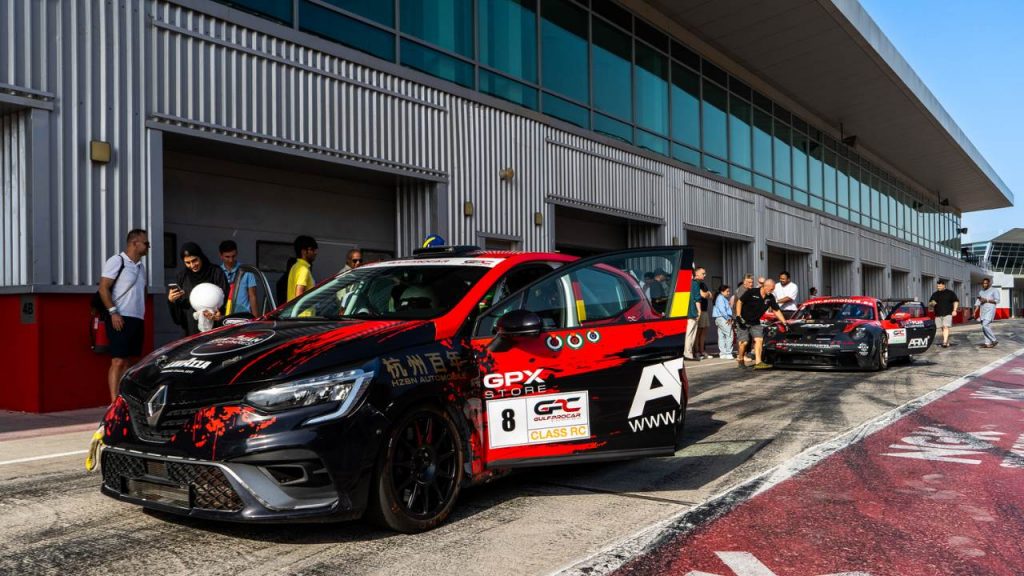Thinking about taking your car to a track day? Whether you’re a first-timer or an experienced racer, proper car preparation is essential for safety, performance and fun. The good news is that you don’t need a race team or a huge budget – there are upgrades and maintenance steps to suit every level and wallet.
In this guide with ARMotors(ARM®) we’ll walk you through how to prepare your car for a track day. Our founders are avid racers & our mechanics work with race teams from all over the globe who are racing within the UAE – so we know everything from the basic safety checks and essential servicing to performance upgrades that can transform your car into a true track-day weapon.
Step 1: Essential Track Day Preparation
Many cars are capable of handling a day on the circuit straight from the showroom. However, prolonged high-speed driving pushes every component to its limit. Before hitting the track at The Autodrome in Dubai or Yas Marina Circuit in Abu Dhabi you need to take care of these essential steps to protect your car and ensure a trouble-free day.
Service and Oil Check
Start with a comprehensive service. Replace all fluids — engine oil, gearbox oil, differential oil, and brake fluid — with high-performance options designed for sustained heat and stress (for example, Castrol Edge or Motul 300V).
Check your oil level carefully. Some engines prefer slightly lower levels to avoid oil being drawn into the intake at high revs, while others need a little extra to prevent oil starvation in corners. Consult a specialist or your owner’s forum for advice. Always check oil levels after every session track use burns more oil than regular driving.
Full Vehicle Inspection
Bring your car to ARMotors(ARM®) so we can go over every critical component. Even modern cars can develop loose bolts or worn mounts under track stress.
This will pay particular attention to:
- Brake caliper bolts and hoses
- Engine and gearbox mounts
- Suspension arms, subframe bolts, and steering components
- Exhaust hangers and mountings
If you’ve recently bought a used car, check for botched repairs or missing fasteners – track driving will quickly expose weak spots.
Tyres and Pressures
Your tyres are the only contact between your car and the tarmac – they matter more than horsepower.
Make sure they’re in good condition, with no cracks or uneven wear. On your first track day, you may not wear them down much, but tread depth and correct pressures are critical.
Experiment with tyre pressures to find your car’s balance between understeer and oversteer. Keep a pressure gauge handy – as tyres heat up, the pressure will rise significantly.
Suspension Alignment
A small tweak to your suspension geometry can make your car feel sharper and more responsive.
Adjusting the front toe angle slightly can improve turn-in, but it’s best to get professional advice or a proper alignment before making changes. A touch of toe-in will increase agility but can make the car twitchier.
Step 2: Basic Track Day Modifications
Once your car is safe and serviced, you can start by making simple upgrades to improve performance and reliability. With AED 2000 – 4000, you can make a huge difference to your track-day experience.
Fit Track-Ready Tyres
The most effective upgrade for any track car is a set of track-biased tyres. You don’t necessarily need full slicks – just something with a consistent compound designed for heat cycles.
Avoid old tyres – rubber hardens over time and reduces grip after about three years.
Focus on Weight Reduction
Weight reduction improves every aspect of performance: acceleration, braking and cornering.
At this stage, remove only non-essential items such as :
- Rear seats
- Spare wheel
- Boot carpet and sound-deadening
- Tools and unnecessary interior trim
Swapping to a lightweight battery can save several kilos too. Avoid removing critical items like mirrors – they add little weight and are vital for safety on track.
Improve Cooling and Reliability
Heat is your enemy during long stints.
Consider replacing an engine-driven fan with a high-quality electric fan, which is more reliable at high RPM. If heat builds up under the bonnet, add cooling vents or prop the bonnet open slightly to release trapped air.
Upgrade the Brakes
Track driving generates enormous brake temperatures.
To prevent brake fade:
- Fit race-spec brake pads (e.g., EBC Yellowstuff, Ferodo DS2500)
- Use high-performance brake fluid (like Motul RBF600), and change it twice yearly
- Remove stone guards to improve airflow
- If fade persists, install brake cooling ducts using flexible heat-resistant tubing
Enhance Driver Support
Install a bucket seat and harness for better control and confidence. A supportive seat keeps you secure and connected to the car. Always test different seats before buying – comfort and fit are highly personal.
Suspension and Ride Height
Lowering your car’s ride height can reduce body roll and sharpen handling. However, avoid going too low – an overly stiff setup can make the car unpredictable on rough surfaces.
Adjustable dampers are a smart investment, allowing you to fine-tune the balance for each circuit.
Exhaust and Intake
A performance exhaust system and cold-air intake can provide minor power gains and reduce weight.
Just remember to check track noise limits – it’s no fun being turned away for exceeding decibel restrictions.
Step 3: Building the Ultimate Track Day Car
Once you’ve mastered the basics, you can move on to more advanced modifications that transform your car into a dedicated track machine.
Advanced Suspension Tuning
Adding camber adjustment lets you optimise tyre contact through corners.
Replace soft rubber bushes with polyurethane or spherical joints to increase precision and reduce flex.
For aggressive driving, stiffer springs and adjustable dampers help control body movement and maximise grip.
Tyre Upgrades
With a dialled-in suspension setup, you can step up to semi-slicks or full race tyres.
Race compounds offer massive grip but wear faster and increase stress on brakes and suspension — ensure all components are up to the task.
Brake System Overhaul
For serious performance, upgrade to larger calipers and discs.
Lightly grooved discs improve bite, but excessive drilling can cause cracks.
Add a brake bias valve to fine-tune front-to-rear balance and improve pedal feel.
Engine Tuning and Power Upgrades
For the ultimate track car, consider an ECU remap or even an engine swap.
Turbocharged engines often yield big gains from remapping alone. Always get your car dyno-tuned at a reputable rolling road to maintain reliability.
Transmission and Differential
As power increases, so do g-forces and drivetrain stress.
Upgrade to a performance clutch, short-shift gearbox, and a limited-slip differential (LSD) to put the power down efficiently.
Extreme Weight Reduction
For a full track build:
- Replace glass with polycarbonate windows
- Remove door internals and unnecessary wiring
- Replace the dashboard with a lightweight race pod
- Delete the heater unit (use anti-fog spray and a small fan instead)
A well-executed weight-loss programme can reduce overall mass by up to 30%, dramatically improving performance.
Roll Cage and Safety Equipment
While track-day crashes are rare, safety should always come first.
Fit an FIA-approved roll cage for protection and extra chassis stiffness.
Avoid “show cages” – they offer zero safety and can be dangerous in an impact.
Always use motorsport-grade padding on bars near your head, and never rely on foam pipe insulation.
Adding strut braces or connecting the cage to suspension points can further stiffen the chassis, enhancing cornering precision.
Build Smart, Drive Safe, Have Fun!
Preparing your car for a track day is as much about reliability and safety as it is about speed. Start with the essentials, learn your car’s limits, and upgrade gradually.
If you’re chasing lap times or simply enjoying the thrill of driving flat-out in a controlled environment, the key is to build a car that’s fun, dependable, and tailored to you.
At ARMotors(ARM®) with our vast background in racing we can prep you if you want a full track worthy car or if you arejust a casual enthusiast who wants to make sure your car is track ready so you do not do any damage – we have got you covered!





